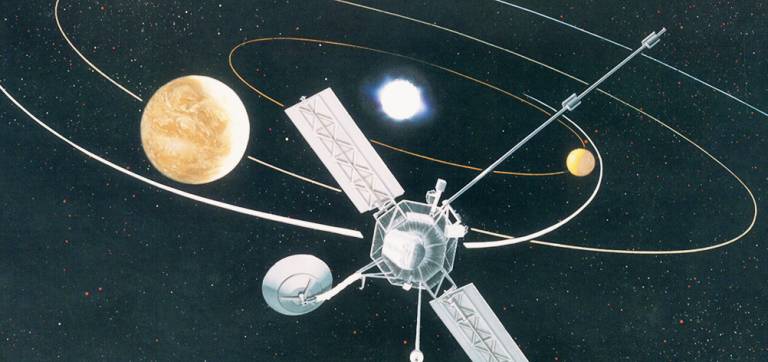First direct sightings of low-energy positronium collisions
25 November 2015
Positrons are the antimatter counterpart to electrons with which they annihilate releasing gamma-rays. In addition to their importance in our fundamental understanding of nature, studies of their interactions with ordinary everyday matter allow us, for example, to investigate crystal structures and to obtain functional images of human organs using the medical scan technique of positron emission tomography (PET). In many collisions of positrons with matter, positronium (Ps) is formed.
Positronium is a hybrid made of a positron and an electron, analogous to the hydrogen atom with the positron replacing the proton. So often is Ps formed, that e.g. 80% of gamma-rays detected in PET, and 95% of all gamma-rays released from the galactic centre of the Milky Way are the result of Ps decay.
Once formed, Ps has ample time to interact with matter before annihilating because its lifetime, although of the order of nanoseconds, is still millions of times longer than typical scattering times. For these reasons, knowledge of how Ps itself interacts with matter is important not only for collision physics but also, for example, so that we may improve radioprotection in PET, or learn about the environment in which positrons annihilate in outer space.
UCL researchers have now generated an energy-tunable beam of Ps atoms at energies five times lower than ever obtained before and made direct measurements of Ps scattering probabilities within the range 1.4-7 eV for the first time.
In the study, just published in the journal Physical Review Letters, Gaetana Laricchia and her team have found that the probabilities of Ps scattering from argon and xenon decrease with decreasing energy in a similar way to that of electron projectiles for which a quantum mechanical phenomenon (the Ramsauer-Townsend effect) results in "target transparency". Professor Laricchia explained that this result contradicts the available predictions and poses a significant challenge to theories.
The work will aid scientists in better understanding the subtle collision effects for low energy Ps, its fundamental properties and develop accurate descriptions of matter-antimatter interactions and atomic collisions in general.
Notes
The research was published on 24 November 2015 in the journal Physical Review Letters (PRL), in an article entitled "Positronium production and scattering below its breakup threshold".
The work was funded by the Engineering & Physical Sciences Research Council.
Related links
- To the paper in PRL
- UCL Physics & Astronomy
- UCL Positron Group http://www.ucl.ac.uk/positron-physics/title.html
Researcher profile
Professor Gaetana Laricchia on UCL Iris http://iris.ucl.ac.uk/iris/browse/profile?upi=GLARI24
 Close
Close




